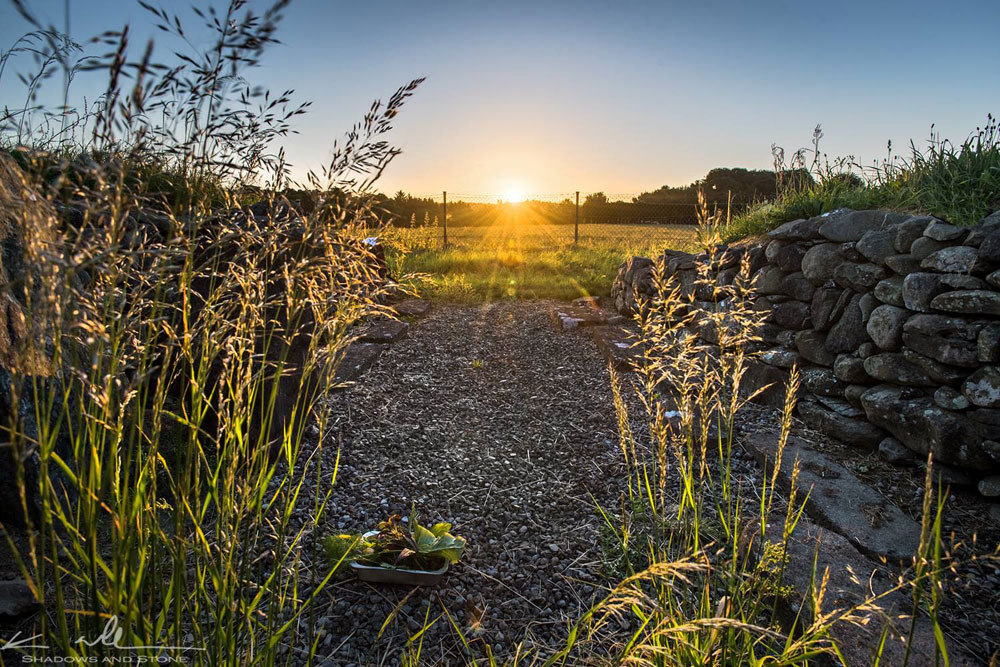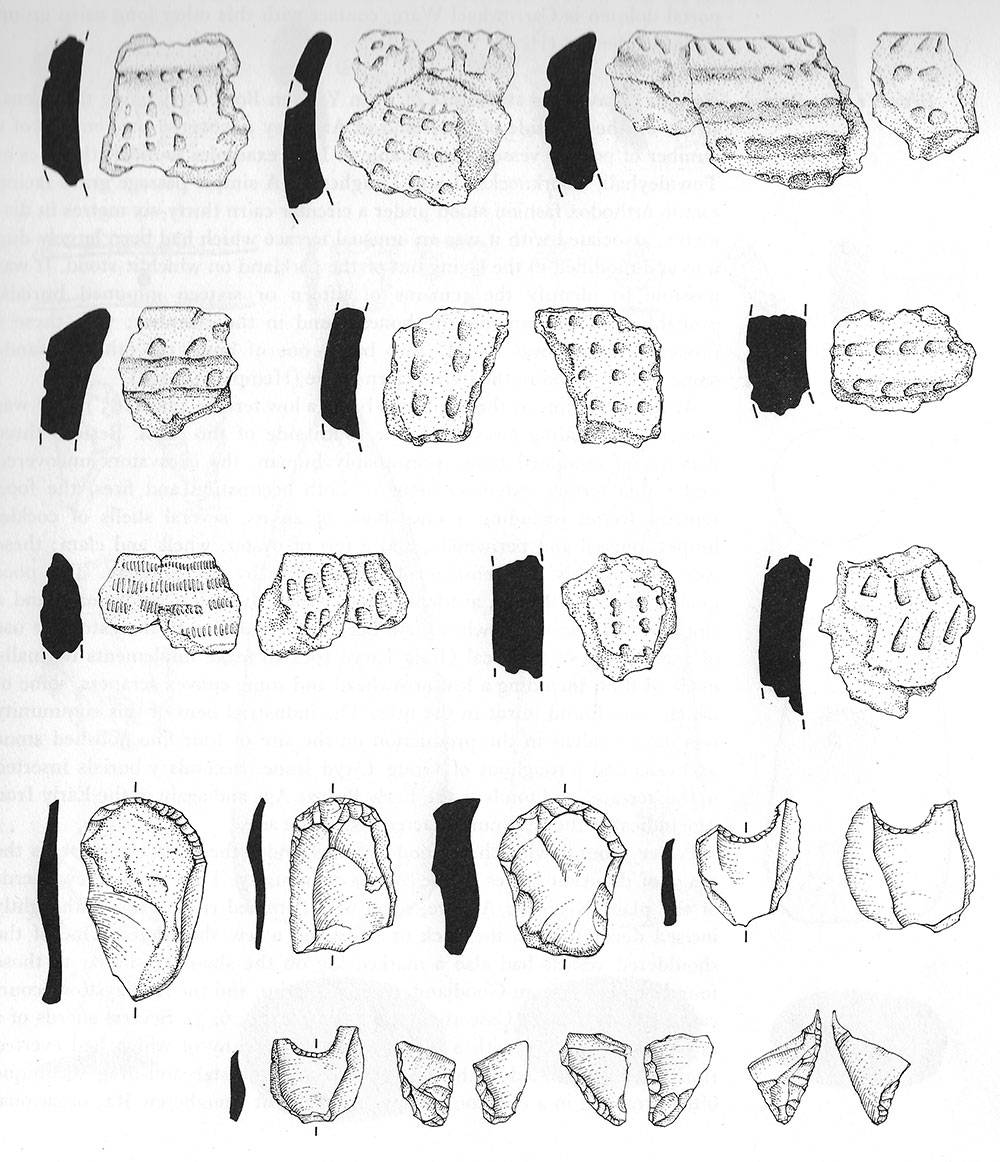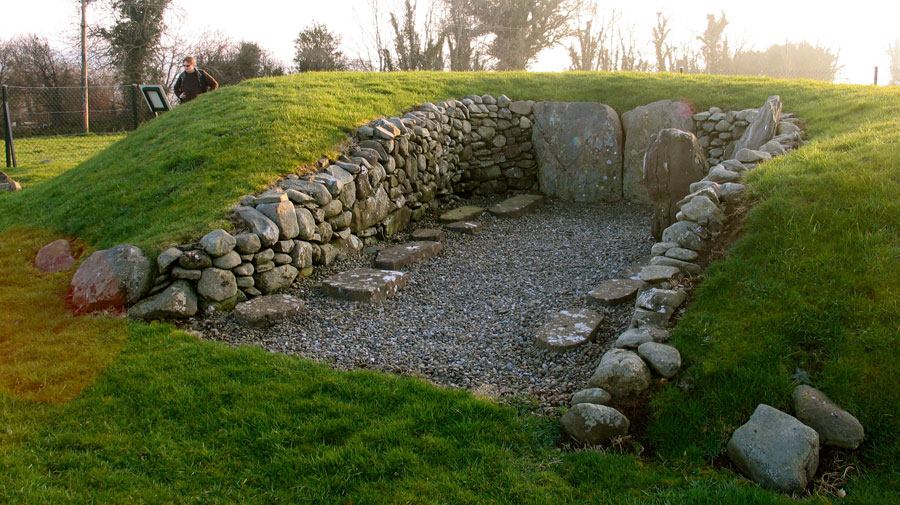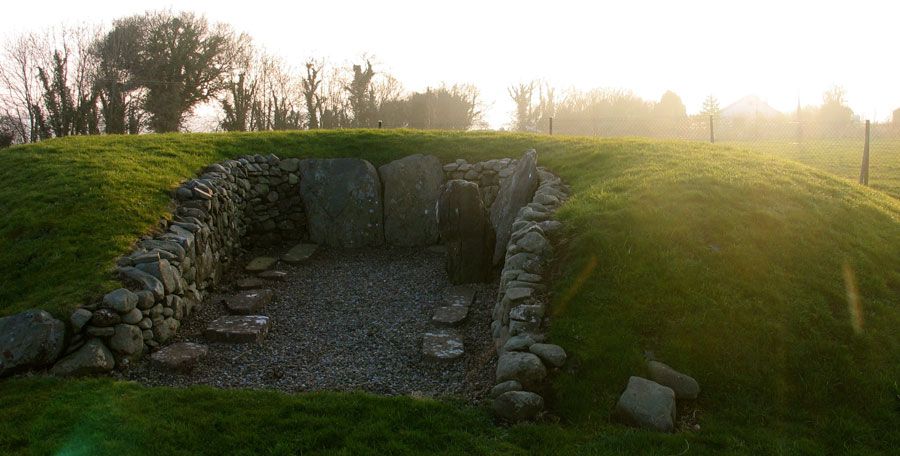Townley Hall megalithic monument
Townley Hall is the most northerly of the megalithic chambers within the Boyne Valley and is three kilometers north of Newgrange and close to Dowth. Townley Hall was the first of the Boyne Valley monuments to be excavated in modern times when the site was investigated by George Eoghan in 1960. Working at Townley Hall left many unanswered questions in relation to habitation, and George Eoghan went on to work at knowth1.html, where his excavations and investigations would last 50 years.
The monument at Townley Hall, a passage grave of about thirteen meters in diameter had been rifled and destroyed in antiquity, and only two orthostats remained of the sixteen that formed the neolithic chamber. Imported sand was found within the chamber, which had a simple or undifferentiated plan and the missing stones have been imaginatively marked with concrete stumps. There were sockets for seven orthostats along each side of the passage with two at the end.

Photograph © Ken Williams, Shadows and Stone.
The passage was 5.5 meters in length and and opened towards the position of the midsummer sunrise in the northeast. This alignment to the summer solstice was captured by Ken Williams in 2018.
Townley Hall may have been a tertre, an early form of passage grave without a cairn consisting of a chamber upon a raised platform like those at Carrowmore. A circle of kerbstones bounded the monument, thirteen of which have survived. There were four concentric circles or rings on the ground surface, which encircle the chamber and indicate that it may have been a free standing monument at some stage. The rings are connected by radial lines like a spiders web.
Excavators discovered the remains of some kind of habitation site with some 142 post-holes which were up to 5 cm in diameter and which formed no discernible pattern, and nine hearths, two of which were cobbled. Three of the hearths had remains of cremated bone, possibly the remains of a meal cooked on site. In the occupation layer, some charred hazel nuts, emmer wheat and barley were discovered.

The amount of debris, 1.5 thick in places led to excavators to conclude that this was a regularly-used camp with possible timber huts or tents erected here. Flint artifacts were discovered in large amounts and consisted of forty-six hollow scrapers and seventeen end-scrapers, with three arrow heads and other items, altogether weighing 2.7 kg.
The ceramic finds consisted of numerous fragments of pottery including many of Carrowkeel Ware. The total, five kilorgrams of shards are estimated to be the remains of at least 24 pots, of which at least ten are of the Carrowkeel Ware style. Cremated and uncremated bone and a portion of a skull were also unearthed.
National Monuments Report
This monument, excavated in 1960-1 (JRSAI 1963, 37-81), comprised a round mound, 13.5 meters in diameter, covering the site of a destroyed undifferentiated passage-tomb aligned north-east to south-west with an entrance at the north-east end. Though only two orthostats survived, the sockets of the others were located. It originally consisted of sixteen uprights, seven on each side and two at the rear. The tomb measures 5.3 meters long and gradually widens from about 1 meter internally at the entrance to 1.5-1.6 meters at the centre, narrowing to 1.2 meters at the rear. The tomb was enclosed within four concentric rings of stone setting, lined in places by radial lines of stones. The mound was originally bounded by a kerb of stones, thirteen of which survived. No finds were recovered from this level. Beneath the mound was a settlement site (LH024-008001).


